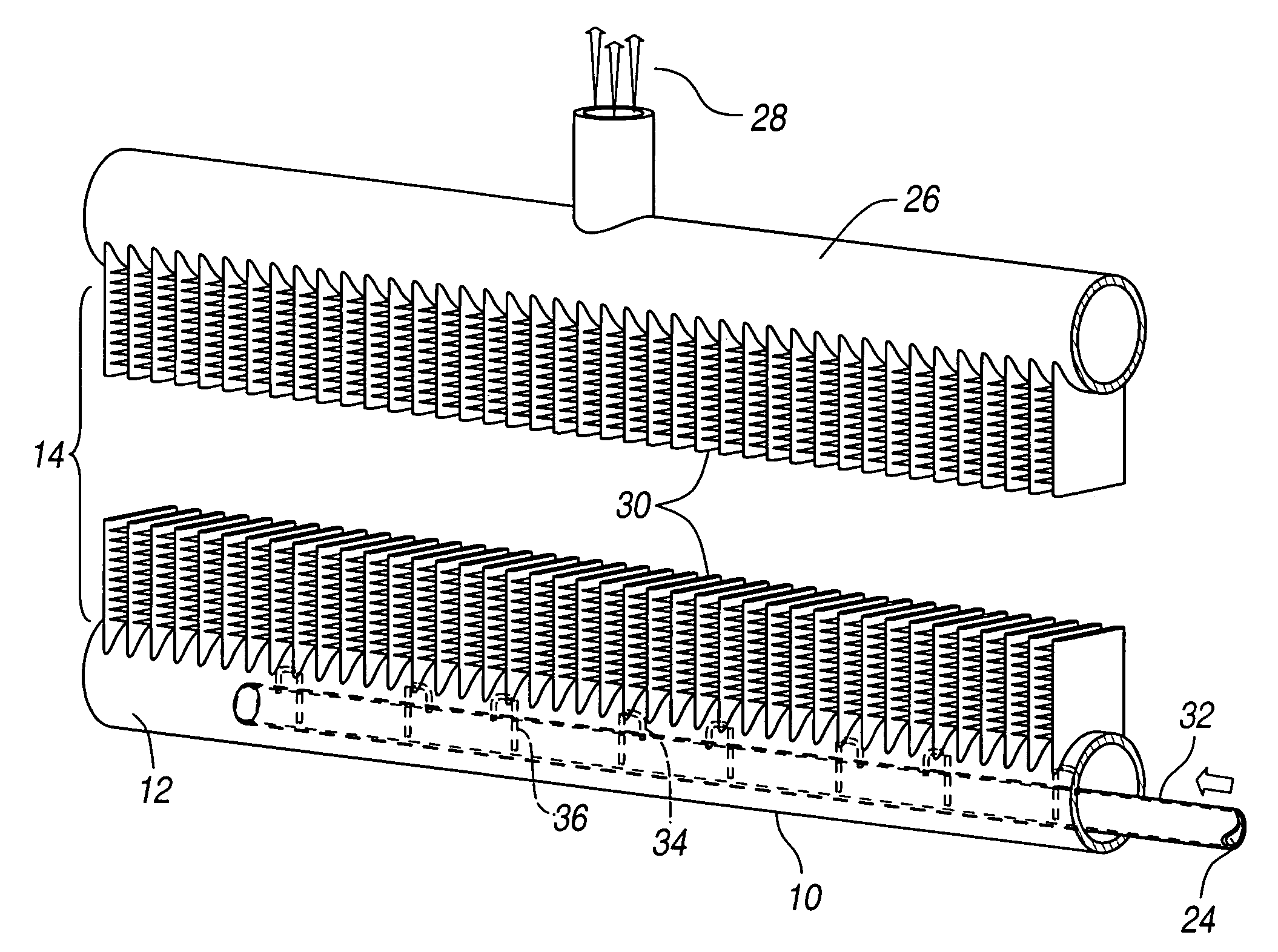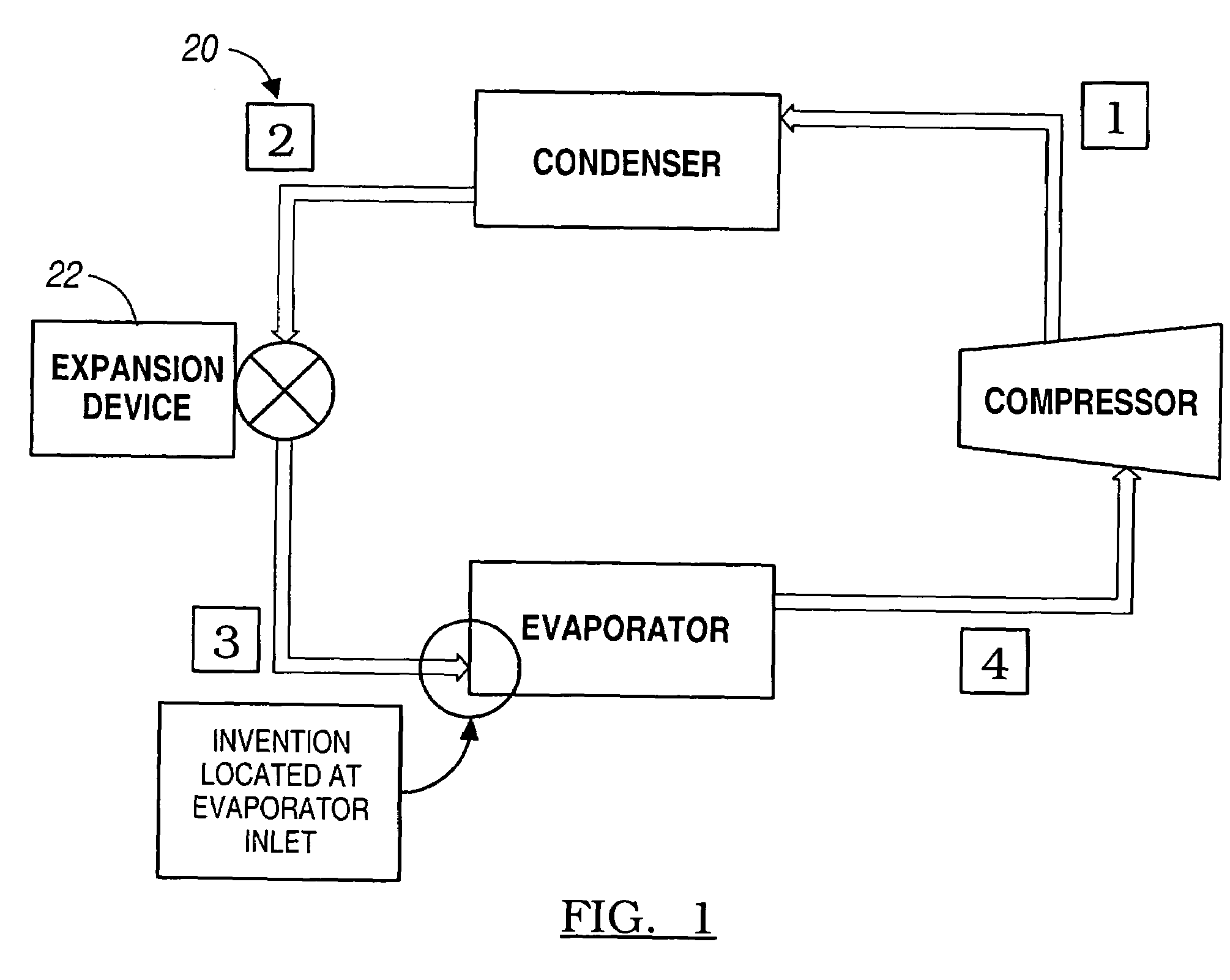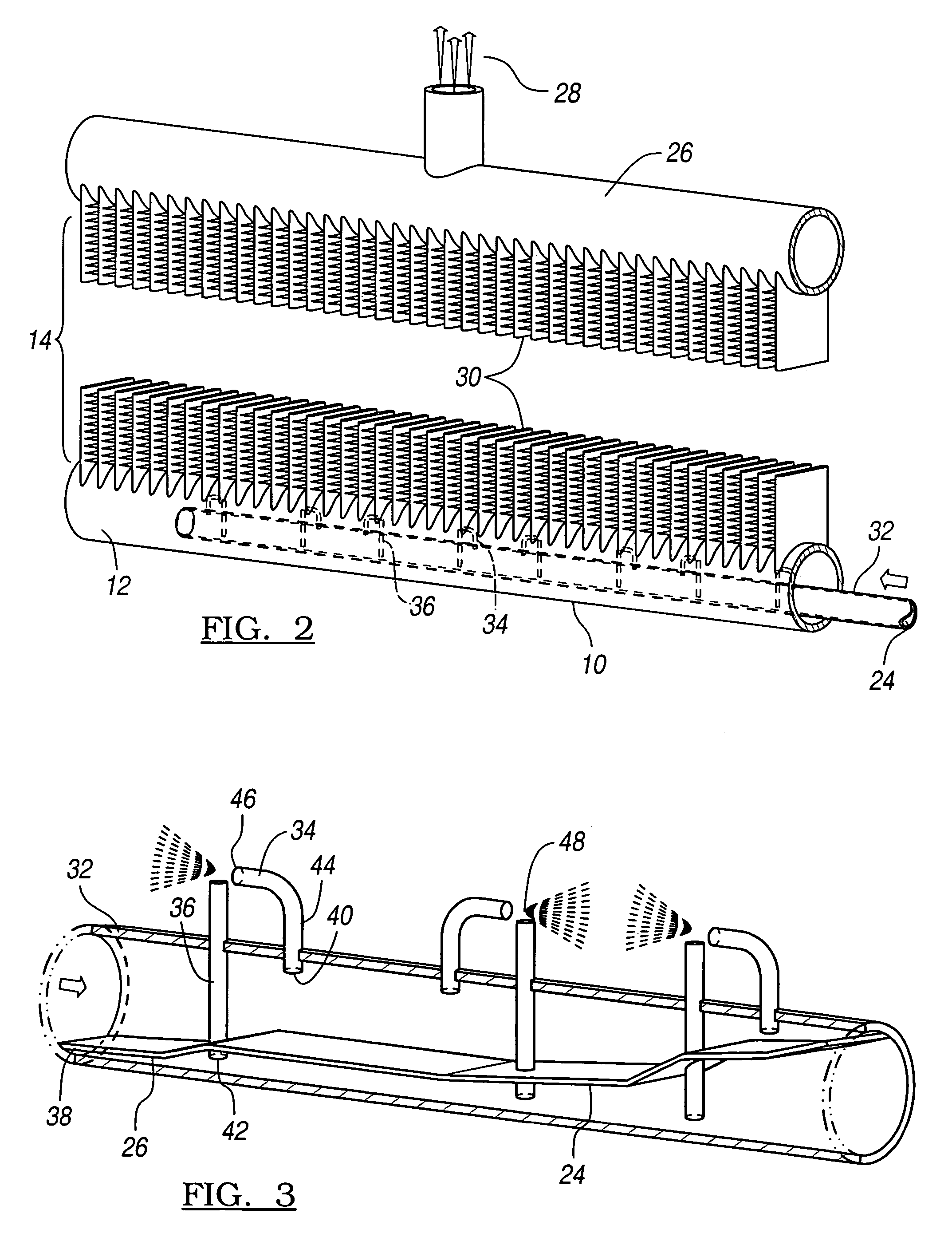Refrigerant distribution device and method
a distribution device and refrigeration technology, applied in refrigeration and liquidation, refrigeration machines, lighting and heating apparatus, etc., can solve the problems of complex goal, less than optimal utilization of evaporator heat exchanger, and non-uniform cold air
- Summary
- Abstract
- Description
- Claims
- Application Information
AI Technical Summary
Benefits of technology
Problems solved by technology
Method used
Image
Examples
Embodiment Construction
)
[0025]Turning first to FIG. 1, there are depicted the major components of a conventional refrigeration system. This figure is useful in illustrating the positioning of the invention in relation to conventional components. It will be appreciated that the term “refrigeration cycle” is a generic term which describes a vapor compression cycle that is used in both air conditioning and low temperature refrigeration systems.
[0026]In FIG. 1, the compressor adds energy to a refrigerant by compressing it to a high pressure. The refrigerant enters the condenser along passage (1) as a high temperature vapor. The condenser typically rejects energy to a heat sink—usually ambient air. Upon emergence from the condenser as a high pressure subcooled liquid (2), the refrigerant flows through an expansion (throttling) device. This device reduces the pressure of the refrigerant. On leaving the expansion device, the refrigerant exists in two phases: primarily liquid (about 80%); and some vapor (about 20...
PUM
 Login to View More
Login to View More Abstract
Description
Claims
Application Information
 Login to View More
Login to View More - R&D
- Intellectual Property
- Life Sciences
- Materials
- Tech Scout
- Unparalleled Data Quality
- Higher Quality Content
- 60% Fewer Hallucinations
Browse by: Latest US Patents, China's latest patents, Technical Efficacy Thesaurus, Application Domain, Technology Topic, Popular Technical Reports.
© 2025 PatSnap. All rights reserved.Legal|Privacy policy|Modern Slavery Act Transparency Statement|Sitemap|About US| Contact US: help@patsnap.com



